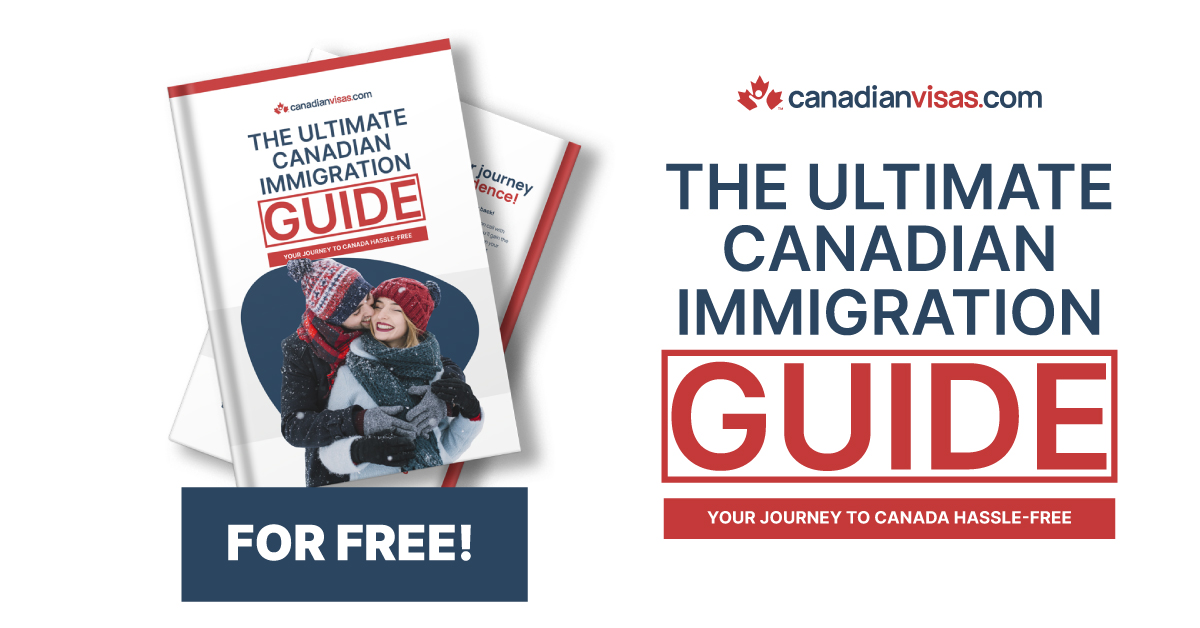
Jun 18, 2024 | Blog, Immigrate to Canada, Immigration, In the News, Skilled Workers
A new act, the International Credentials Recognition Act, will come into effect in British Columbia (B.C.) on July 1,2024, aiming to significantly ease the licensing process for qualified professionals in 29 occupations. This initiative targets 18 regulatory authorities, requiring them to remove unnecessary barriers for internationally trained individuals.With this act, experienced professionals with certifications obtained outside of Canada will have a smoother path to pursuing and gaining recognition for their qualifications.
One of the key changes addresses the long-standing challenge faced by many newcomers – the catch-22 of Canadian work experience requirements. Previously, individuals needed Canadian work experience to obtain a license, but were unable to gain that experience without a license in the first place. The new act eliminates this requirement for qualified professionals, opening doors for them to contribute their skills.
The act also promotes fairness by mandating regulatory bodies to charge the same fees to both international and domestic applicants. Additionally, unnecessary English language testing requirements will be eliminated, reducing unnecessary hurdles for qualified individuals.
To ensure public accountability and transparency, the act introduces additional data collection and reporting obligations for regulatory authorities. This will be accompanied by enforcement mechanisms to guarantee compliance with the legislation.
Details and Timeline
Regulations implementing the act will be rolled out in stages. A significant step will occur on July 1, 2025, with the removal of Canadian work experience requirements for licensing by 18 regulatory bodies that currently have this as a prerequisite.
While some regulations take effect later, the core aspects of the act will be in place on July 1, 2024. These include:
- Establishing clear guidelines for the superintendent of international credential recognition to issue exemptions to regulatory bodies with a well-founded justification for requiring Canadian work experience in specific cases.
- Setting a maximum administrative penalty of $100,000 for non-compliance.
Key Features of the International Credentials Recognition Act
The act introduces several key features to improve the overall experience for internationally trained professionals:
- Reduced need for re-submitting English language tests: Applicants who have previously submitted valid English language test results will not be required to provide new ones.
- Standardized fees: Regulatory bodies will be mandated to charge the same fees to both international and domestic applicants.
- Improved efficiency: The act aims to ensure that candidates receive the information they need to obtain professional certification swiftly and without unnecessary delays.
- Reduced wait times: The province will require regulatory bodies to make licensing decisions within a reasonable timeframe.
- Increased transparency: Regulators will be required to make all information about their certification assessment processes readily available online.
- Enhanced accountability: The act introduces new reporting requirements and grants enforcement authority to ensure regulatory bodies are held accountable.
- Establishment of a dedicated superintendent role: A new superintendent of international credential recognition will be appointed. This individual will be responsible for promoting fair credential recognition practices, reviewing the performance of regulatory bodies, and overseeing compliance with the new legislation.
New International Credentials Recognition Act: Full List of 18 Regulatory Authorities
- Applied Science Technologists and Technicians of BC
- Architectural Institute of BC
- Association of BC Forest Professionals
- Association of BC Land Surveyors
- Association of Professional Engineers and Geoscientists of BC
- BC College of Social Workers
- BC Institute of Agrologists
- BC Registered Music Teachers’ Association
- BC Society of Landscape Architects
- College of Applied Biologists
- College of Veterinarians of BC
- Director of Teacher Certification (and BC Teachers’ Council)
- Director of the Early Childhood Educator Registry
- Emergency Medical Assistants Licensing Board
- Law Society of BC
- Organization of Chartered Professional Accountants of BC
- Society of Notaries Public of BC
- Superintendent of Real Estate (and BC Financial Services Authority)
New International Credential Recognition Act: Full List of 29 Occupations
- registered music teacher
- professional engineer
- professional teaching certificate holder
- land surveyor
- early childhood educator
- landscape architect
- early childhood educator assistant
- applied science technologist
- conditional teaching certificate holder
- certified technician
- social worker
- veterinarian
- registered clinical social worker
- lawyer
- professional biologist
- architect
- applied biology technician
- notary public
- registered biology technologist
- emergency medical assistant, including paramedics
- professional geoscientist
- chartered professional accountant
- registered professional forester
- associate real estate broker
- registered forest technologist
- managing real estate broker
- professional agrologist
- real estate representative
- technical agrologist

https://consultations.canadianvisas.com/canadianvisas-generalconsultation

Jun 12, 2024 | Blog, Immigrate to Canada, In the News, Skilled Workers, Temporary Foreign Workers, Work Permits, Working In Canada
Canada’s immigration system is brewing significant changes for the Post-Graduation Work Permit (PGWP) program, according to discussions between federal and provincial officials. Currently, the PGWP grants international students who graduate from designated learning institutions (DLIs) an open work permit.
Linking PGWPs to Labor Market Needs
Internal documents from the Immigration, Refugees and Citizenship Canada (IRCC) Deputy Minister’s office (2024) shed light on a potential overhaul too link PGWP issuance directly to labor market needs. This translates to potentially smoother access to work permits for graduates with in-demand skills, while potentially restricting access for graduates from other programs.
Aligning Education with In-Demand Skills
The driving force behind this potential shift appears to be aligning educational programs with the skills most sought-after in the Canadian job market. Internal IRCC survey documents reveal efforts to map job titles to specific programs of study.This mapping exercise involved synchronizing Canada’s National Occupation Classification (NOC) system with the Classification of Instructional Programs (CIP) system. Essentially, these systems categorize occupations (NOC) and educational programs (CIP) by field. The documents use the example of the “carpenter” NOC being linked to programs like “construction trades,” “carpentry,” and “woodworking/general.”
Why the Shift? Realigning with Labor Market Needs
IRCC reiterates its goal of “re-aligning with labor market needs” to facilitate work permits for graduates entering high-demand fields, while potentially limiting access for others. Notably, Canada’s last major PGWP update came in 2008,introducing open work permits based on study length. IRCC data highlights a 214% increase in PGWP issuance between 2018 and 2023.
Potential Downstream Effects on Immigration Pathways
These proposed PGWP changes might be part of a larger picture concerning temporary residency levels in Canada. Recent sweeping changes announced by IRCC regarding temporary residents (work/study permits, visitor visas, electronic travel authorizations) hint at further motivations. Following the 2024 international student cap announcement, IRCC took the historic step of including temporary resident levels in the annual Immigration Levels Plan for the first time. This move,beyond prioritizing permanent resident and citizen hiring, might also be a strategy to address pressure on social services (healthcare, housing) by potentially reducing the annual influx of temporary residents.
The potential PGWP revamp could have significant downstream effects on immigration pathways for international graduates in Canada. Gaining Canadian work experience through the PGWP is a key factor for eligibility in many permanent residence (PR) programs, particularly federal and provincial economic programs that often target graduates. If implemented, these changes could significantly impact future immigration opportunities, even for those currently studying in Canada.

https://consultations.canadianvisas.com/canadianvisas-generalconsultation

Jun 7, 2024 | Becoming a Sponsor, Blog, Immigrate to Canada, Immigration, Immigration Reform, In the News, New Immigration Programs, New Laws, Skilled Workers, Work Permits, Working In Canada
The Canadian government, through Immigration, Refugees, and Citizenship Canada (IRCC), is offering a new pathway for highly skilled foreign workers to contribute to the country’s innovative businesses. Launched on April 15, 2024, the Innovation Stream Pilot is a two-year initiative designed to streamline the work permit process for select Canadian companies participating in the Global Hypergrowth Project (GHP).
Fast-Track Work Permits for High-Demand Skills
This pilot program exempts eligible employers from the requirement to conduct a Labour Market Impact Assessment (LMIA) for specific positions. LMIA is a process that verifies if hiring a foreign worker will negatively affect Canadian employment opportunities. The Innovation Stream Pilot prioritizes filling high-skill roles (as defined by National Occupational Classification or NOC levels 0, 1, 2, or 3) with qualified foreign talent.
Benefits for Workers and Families
This new Innovation Stream Pilot will allow certain Canadian companies to bring in highly skilled foreign workers on work permits without needing an LMIA (Labour Market Impact Assessment). Jobs in National Occupational Classification (NOC) categories 0, 1, 2, or 3(Training, Education, Experience, and Responsibilities) are considered high-skilled jobs. Furthermore, family members of these foreign workers will be eligible for an open work permit, allowing them to work for almost any employer in Canada. The Innovation Stream is scheduled to continue for two years, ending on March 22, 2026, unless there are any changes.
Program Duration and Eligibility
The Innovation Stream Pilot is currently scheduled to run until March 22, 2026. To be eligible, foreign workers (whether inside or outside Canada) must possess a valid job offer from a company participating in the GHP. The offered position must fall under an NOC 0, 1, 2, or 3 category and meet the prevailing wage standards for the specific region. Additionally, immigration officials will assess the applicant’s qualifications to ensure they align with the job requirements.
- Employers: Companies participating in the Global Hypergrowth Project are eligible to hire through the Innovation Stream.
- Workers: Foreign nationals with job offers in high-skilled occupations (National Occupational Classification categories 0, 1, 2, or 3) can apply from within or outside Canada. These categories typically require extensive education, training, or experience.
- Family Members: Spouses and dependents of approved workers will be eligible for open work permits, allowing them to work for any employer in Canada.
Companies Participating in the Global Hypergrowth Project
As of today, eight Canadian companies are authorized to hire foreign talent under the Innovation Stream Pilot without the LMIA requirement. These companies include:
- Ada Support Inc.
- AlayaCare
- CellCarta
- Clarius Mobile Health
- Clio
- Duchesnay Pharmaceutical Group (DPG)
- Lightspeed Commerce
- Vive Crop Protection
The Global Hypergrowth Project: Fostering Innovation
The GHP is a government initiative designed to accelerate the growth of Canadian businesses. It provides participating companies with customized support and resources tailored to their specific needs. This not only empowers these companies to thrive but also creates a dynamic environment that attracts top international talent.
Employer-Specific Work Permits Explained
An employer-specific work permit restricts the holder’s employment to the terms outlined in the permit document. These terms typically specify the employer’s name, duration of employment, and authorized work location.
The Innovation Stream Pilot represents a significant step by the Canadian government to attract skilled foreign talent and bolster the nation’s innovation ecosystem. This program offers promising opportunities for both Canadian businesses and qualified foreign workers seeking to contribute their expertise to Canada’s economic growth.

https://consultations.canadianvisas.com/canadianvisas-generalconsultation

Mar 12, 2024 | Blog, Canadian Employers, Federal Skilled Trades, Immigration, In the News, New Immigration Programs, New Laws, Skilled Workers, Working In Canada
But before packing your bags, understanding the cost of living in Canada is crucial for a smooth transition. This comprehensive guide explores the various expenses you’ll encounter, regional variations, and expert tips to adjust your budget and thrive in your new Canadian home.
Cost of Living in Canada
Breaking Down Your Budget
-
Accommodation: The biggest chunk of your expenses will likely be housing.
- Rent: Cities like Toronto and Vancouver have high rent, averaging $1,800-$2,000 CAD for a one-bedroom apartment. Smaller cities and rural areas offer more affordable options, sometimes under $1,000 CAD. Consider shared accommodations or basement apartments to save.
- Homeownership: Aspiring homeowners should be aware of varying prices across regions. Major cities have higher housing costs, while rural areas offer more economical options. Factor in mortgage payments, property taxes, and home insurance.
- Utilities: Basic utilities like electricity, water, and internet typically range from $100 to $200 CAD per month. Heating costs can be significant in colder regions during winter.
-
Food: Grocery shopping in Canada is comparable to other developed nations. Expect to pay around $500 CAD per month for essentials.
- Groceries: Major supermarket chains offer a good variety of fresh, local, and imported products. Consider joining loyalty programs for additional savings.
- Dining Out: Eating out can be expensive, especially in cities. Budget-friendly restaurants offer meals under $20 CAD, while upscale restaurants can cost significantly more. Explore ethnic cuisine for delicious and affordable options.
-
Transportation:
- Public Transportation: Major cities boast efficient public transit systems with fares ranging from $2-$4 CAD per trip. Monthly passes offer cost savings for frequent riders.
- Private Transportation: Owning a vehicle comes with purchase costs, fuel (around $1.50 CAD per liter), insurance (which varies depending on factors like age and driving history), and maintenance expenses. Consider carpooling or opting for fuel-efficient vehicles.
-
Other Expenses:
- Phone & Internet: Phone and internet plans vary in price and features. Compare providers to find the best deals. Expect to pay around $50-$100 CAD per month for a basic phone and internet bundle.
- Clothing: Clothing costs depend on your style and shopping habits. Canadian winters require warm clothing, so factor that into your budget. Consider buying second-hand clothes or shopping during sales.
- Entertainment: Canada offers a variety of entertainment options. Enjoy free activities like hiking, exploring parks, and attending cultural events. Budget for occasional paid entertainment like movies, concerts, or sporting events.
Understanding Regional Variations
The cost of living varies significantly across Canada. Major cities like Toronto, Vancouver, and Calgary tend to be more expensive than smaller cities and rural areas. Housing costs are the primary driver of these variations.
The cost of living can differ significantly across Canada. Here’s a general breakdown:
- Major Cities (Toronto, Vancouver, Calgary): Expect higher costs for rent, dining out, and entertainment.
- Mid-Sized Cities (Ottawa, Edmonton, Winnipeg): Offer a good balance between affordability and amenities.
- Smaller Cities & Rural Areas: Generally have lower costs for housing and daily expenses.
Taxes and Additional Considerations
- Taxes: Canada has a progressive tax system, meaning higher earners pay a higher percentage of income tax. Factor in federal and provincial taxes when calculating your net income.
- Healthcare: Canada offers universal healthcare, but some services like prescription drugs may require additional private insurance.
- Cell Phone Plans: Canadian phone plans can be expensive compared to other countries. Research prepaid or pay-as-you-go options for a more cost-effective approach.

Budgeting Tips for a Smooth Transition
- Create a Realistic Budget: Track your income and expenses to understand your spending habits. Allocate funds for essential categories like housing, food, and transportation.
- Research Your City: Before moving, research the average cost of living in your chosen city. This allows for informed budgeting and avoids surprises.
- Embrace a “Cook at Home” Mentality: Dining out regularly can quickly drain your budget. Preparing meals at home offers significant cost savings and allows you to control your diet.
- Utilize Free Activities: Explore Canada’s abundant free entertainment options like parks, museums (often with free admission days), and outdoor activities.
- Seek Out Deals and Discounts: Look for loyalty programs, student discounts, and promotions for everyday purchases. Consider buying used items where appropriate.
Conclusion
Canada offers a high quality of life with a welcoming atmosphere for newcomers. By understanding the cost of living, planning your budget, and utilizing cost-saving strategies, you can comfortably adjust to your new life in Canada. Embrace the diverse experiences this beautiful country has to offer and enjoy your Canadian adventure!


Mar 8, 2024 | Blog, Canadian Employers, Federal Skilled Trades, Immigration, In the News, New Immigration Programs, New Laws, Skilled Workers, Working In Canada
Canada, with its booming economy, diverse landscape, and welcoming atmosphere, attracts skilled individuals worldwide seeking exciting work opportunities. If you’re one such individual dreaming of working in Canada, this in-depth guide will equip you with the knowledge needed to navigate the work permit process. We’ll delve into the different types of work permits, eligibility requirements, application procedures, and valuable resources to help you secure your Canadian work permit.
How to Obtain a Work Permit in Canada
Employer-Specific vs. Open Work Permits
There are two main categories of work permits in Canada, each catering to specific scenarios:
- Employer-Specific Work Permits: As the name suggests, these permits are tied to a specific job offer from a pre-approved Canadian employer. This is the most common type of work permit and requires your employer to demonstrate they couldn’t find a qualified Canadian citizen or permanent resident for the position (through a process called a Labour Market Impact Assessment or LMIA).
- Open Work Permits: These permits offer greater flexibility, allowing you to work for any employer in Canada. Open work permits are typically issued to spouses or partners of permanent residents or study permit holders, recent graduates under specific programs, and individuals participating in international exchange programs.
Understanding Eligibility
To be eligible for a work permit in Canada, you’ll generally need to meet the following criteria:
- Valid Job Offer (Employer-Specific Permits): For employer-specific permits, a valid job offer from a Canadian employer with an LMIA for the position is crucial.
- Meet Educational Requirements: You may need to possess a minimum educational qualification relevant to the offered position.
- Work Experience: Relevant work experience in the field you’re applying for can significantly enhance your application.
- Language Proficiency: Demonstrate English or French language proficiency by meeting the minimum Canadian Language Benchmarks (CLB) scores.
- Proof of Funds: Show sufficient financial resources to support yourself during your stay in Canada.
- Medical Examination: You may be required to undergo a medical examination to ensure you meet Canada’s health standards.
The Application Process: A Step-by-Step Guide
Obtaining a work permit involves a multi-step process. Here’s a breakdown of the general steps:
- Secure a Job Offer (Employer-Specific Permits): Actively search for job opportunities in your field and connect with Canadian employers.
- Labour Market Impact Assessment (LMIA): Your employer will apply for and obtain an LMIA from Employment and Social Development Canada (ESDC) demonstrating the need for a foreign worker.
- Online Application: Once you have a job offer and LMIA (if applicable), proceed to submit the online application form for a work permit through Immigration, Refugees and Citizenship Canada (IRCC).
- Gather Supporting Documents: Compile all required documents, including your passport, educational certificates, work experience letters, LMIA (if applicable), language test results, proof of funds, and a medical certificate (if requested).
- Application Fees: Pay the applicable processing fees associated with your work permit application.
- Medical Examination: Attend a medical examination if required by IRCC.
- Processing Time and Decision: Be patient as processing times can vary depending on the complexity of your application and current workloads at IRCC. Await the final decision on your application.

https://bit.ly/TheUltimateCanadianImmigrationGuide
Popular Work Permit Programs
Several work permit programs cater to specific needs and skill sets:
- Federal Skilled Worker Program (FSWP): Ideal for skilled workers with strong educational backgrounds and work experience in high-demand occupations.
- Federal Skilled Trades Program (FSTP): Targets skilled workers in designated trades facing labor shortages in Canada.
- Canadian Experience Class (CEC): Provides a pathway for skilled workers who have gained valuable work experience in Canada through temporary work permits or international student programs.
- Provincial Nominee Programs (PNPs): These programs allow provinces and territories to nominate individuals aligned with their specific labor market needs. Receiving a provincial nomination significantly boosts your chances of securing a work permit.
Enhancing Your Chances of Success
Here are some valuable tips to increase your chances of obtaining a Canadian work permit:
- Target In-Demand Skills: Research occupations experiencing labor shortages in Canada and tailor your job search accordingly.
- Highlight Your Qualifications: Clearly showcase your skills, experience, and education in your resume and cover letter, emphasizing their relevance to the Canadian job market.
- Seek Professional Guidance: Consider consulting with immigration consultants or lawyers specializing in Canadian work permits for personalized guidance and application support.
- Language Proficiency Enhancement: Improving your English or French language skills can significantly enhance your application and open up more work.
Settling into Life in Canada
Obtaining a work permit is just the first step in your Canadian journey. Here are some additional resources to help you settle smoothly:
- Pre-Arrival Planning: Explore resources offered by IRCC and provincial governments on pre-arrival planning, including housing options, healthcare systems, and banking procedures.
- Settlement Services: Many Canadian cities and communities offer settlement services for newcomers. These services can assist with finding housing, registering for healthcare, opening a bank account, and learning about Canadian culture and customs.
- Job Search Assistance: Utilize employment agencies and job boards specializing in connecting skilled immigrants with employers.
- Networking: Building professional networks through industry events, online communities, and professional associations can open doors to new opportunities and career advancement.
Processing Times
Processing times for work permits can vary depending on several factors, including the type of work permit, your application’s complexity, and current IRCC workloads. Generally, employer-specific work permits tend to have faster processing times compared to open work permits. You can check IRCC’s website for estimated processing times for different types of work permits.
Cost Considerations
Work permit processing times can vary depending on the complexity of your application, current IRCC workloads, and your chosen program. It’s crucial to factor in processing times when planning your move to Canada. Additionally, expect to incur application fees, medical examination costs, and potentially, immigration consultant fees. Obtaining a work permit involves associated costs, including application fees, medical examination fees, and potentially, immigration consultant fees. Be sure to factor in these expenses when planning your work permit application journey.
Post-Work Permit Options
Obtaining a work permit can be a stepping stone towards permanent residency in Canada. Several immigration programs, like Express Entry, prioritize candidates with valid Canadian work experience. Explore your options and understand the pathways available to transition from a work permit holder to a permanent resident.
Alternative Options
While employer-sponsored work permits are the most common route, alternative options exist for individuals with unique circumstances:
- Self-Employed Work Permits: For individuals with exceptional skills and a business concept aligned with Canada’s economic needs, self-employment work permits may be an option. These require a detailed business plan demonstrating economic viability and job creation potential.
- Intra-Company Transfer (ICT) Permits: If you are currently employed by a multinational company with a branch in Canada, you may be eligible for an ICT permit to facilitate your transfer to the Canadian office.
Pre-Departure Considerations
Once your work permit is approved, congratulations! However, the journey doesn’t end there. Here are some essential pre-departure steps:
- Research Cost of Living and Housing: Canada boasts a high standard of living, so research the cost of living in your chosen city and explore housing options to ensure financial preparedness.
- Prepare for Canadian Winter (if applicable): If moving to a region with cold winters, invest in appropriate clothing and winterization gear.
- Open a Canadian Bank Account: Opening a bank account in Canada can simplify financial transactions upon arrival.
- Explore Settlement Resources: Many government and community resources are available to assist newcomers in settling into Canadian life. Familiarize yourself with these resources for a smoother transition.
Conclusion
Obtaining a work permit in Canada requires careful planning, meeting eligibility criteria, and navigating the application process. However, with the right preparation and resources, you can successfully secure your Canadian work permit and embark on an exciting new chapter in your career journey. Remember, Canada welcomes skilled individuals with a desire to contribute to its vibrant economy and diverse society. Take the first step today and unlock the possibilities of working and living in Canada!


Mar 7, 2024 | Blog, Canadian Employers, Federal Skilled Trades, Immigration, In the News, New Immigration Programs, New Laws, Skilled Workers, Working In Canada
Canada, consistently ranked as one of the best countries in the world to live in, attracts immigrants seeking a high quality of life, economic opportunities, and a safe and inclusive environment. With a population of over 38 million people, Canada’s vast and diverse landscape offers a variety of opportunities for newcomers.
This guide provides an overview of the different immigration options available to those interested in making Canada their home. It covers the most popular pathways, including Express Entry, Provincial Nominee Programs (PNPs), Family Sponsorship, Business Immigration, and Refugee and Humanitarian Programs.
Types of Immigration Options
1. Express Entry:
Express Entry is a points-based system that manages applications for permanent residence from skilled workers under three programs:
- Federal Skilled Worker Program (FSWP): Targets skilled workers with work experience in eligible occupations and meet specific language, education, and adaptability requirements.
- Federal Skilled Trades Program (FSTP): Focuses on skilled tradespeople in specific occupations facing labor shortages in Canada.
- Canadian Experience Class (CEC): Offers a pathway to permanent residence for skilled workers who have gained work experience in Canada.
To be eligible for Express Entry, candidates must create a profile and submit their information, including work experience, education, language proficiency, and other factors. The system then ranks candidates based on their Comprehensive Ranking System (CRS) score, and those with the highest scores receive invitations to apply for permanent residence.
2. Provincial Nominee Programs (PNPs):
PNPs are designed to address the specific economic needs of individual provinces and territories. Each PNP has its own eligibility requirements and application process. Some PNPs align with Express Entry, allowing candidates to be nominated by a province and receive additional points towards their CRS score.
Popular PNPs include:
3. Family Sponsorship:
Canadian citizens and permanent residents can sponsor their close family members, including spouses, common-law partners, dependent children, parents, and grandparents, to immigrate to Canada. The sponsorship process involves meeting specific eligibility requirements, demonstrating financial support for the sponsored family members, and submitting a complete application.
4. Business Immigration:
Canada welcomes entrepreneurs and business investors who can contribute to the country’s economic growth and create jobs. Various programs exist for business immigration, including:
- Start-Up Visa Program: Supports entrepreneurs who have innovative business ideas and the potential to create jobs in Canada.
- Self-Employed Persons Program: Targets individuals with skills and experience in eligible occupations who can establish their own business in Canada.
- Provincial Nominee Programs (PNPs): Many PNPs have streams for business immigration, such as the BC PNP’s Entrepreneur Immigration Category.
5. Refugee and Humanitarian Programs:
Canada offers a number of programs for refugees and other vulnerable people who need to resettle in Canada. These programs include:
- Refugee Resettlement Program: Provides assistance to refugees who have been recognized by the United Nations as being in need of resettlement.
- Humanitarian and Compassionate Considerations: Allows individuals to apply for permanent residence on humanitarian grounds, such as when they have family members in Canada or have faced persecution in their home country.
How to Choose the Right Option
The best way to choose the right immigration option for you is to carefully consider your individual circumstances. You should think about your skills, experience, education, language abilities, and financial resources. You should also consider your goals and aspirations for life in Canada.

Where to Find More Information
The Government of Canada’s website provides a wealth of information on immigration options. You can also find information from other sources, such as immigration consultants, and settlement agencies.
Conclusion
Canada is a great place to live, work, and raise a family. With so many different immigration options available, there is a pathway to Canada for almost everyone. By carefully researching your options and planning ahead, you can make your dream of immigrating to Canada a reality.









 Useful Resources for Canada
Useful Resources for Canada
 Useful Resources for U.S.
Useful Resources for U.S.
 Our Local Immigration Services
Our Local Immigration Services